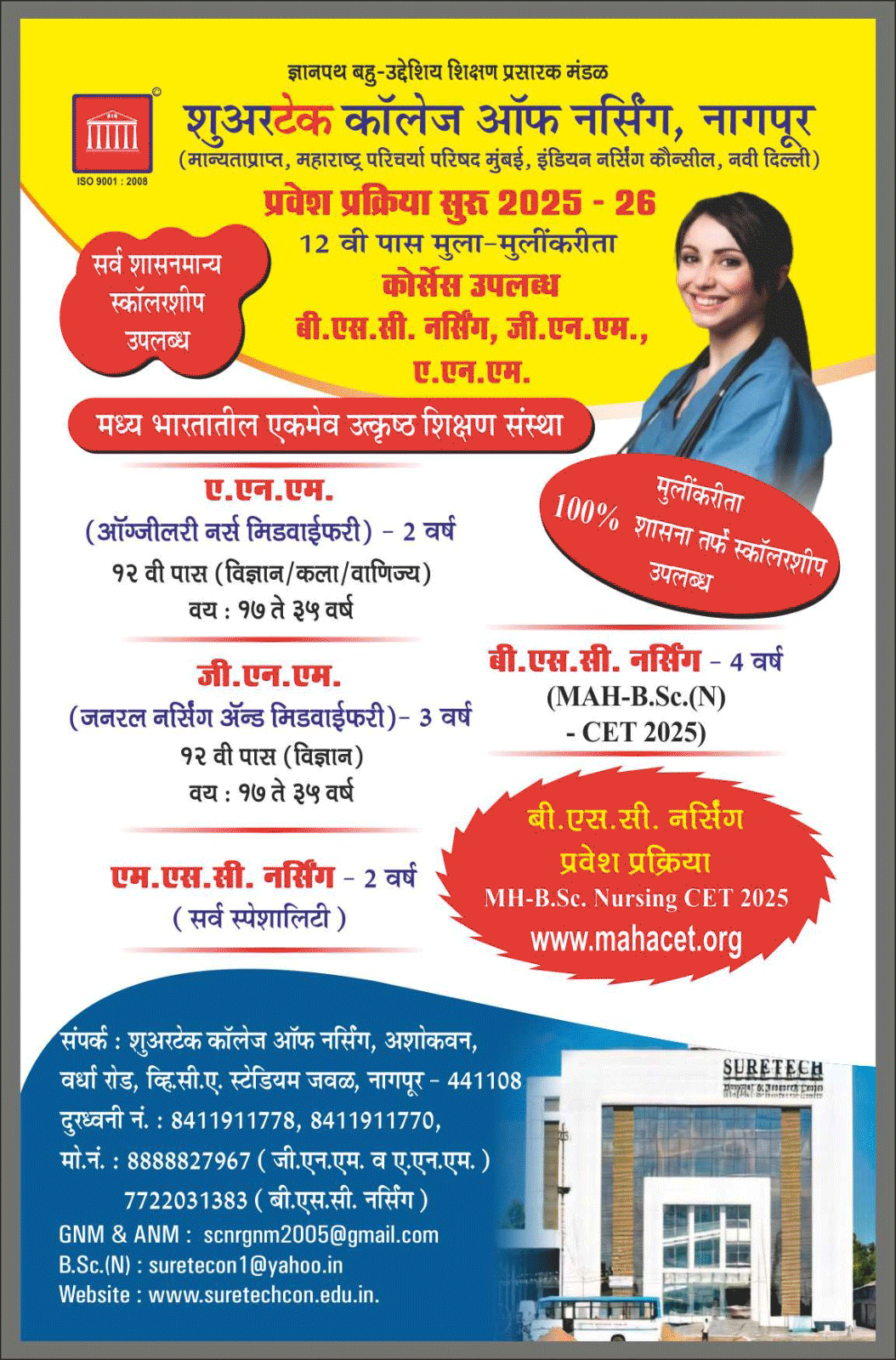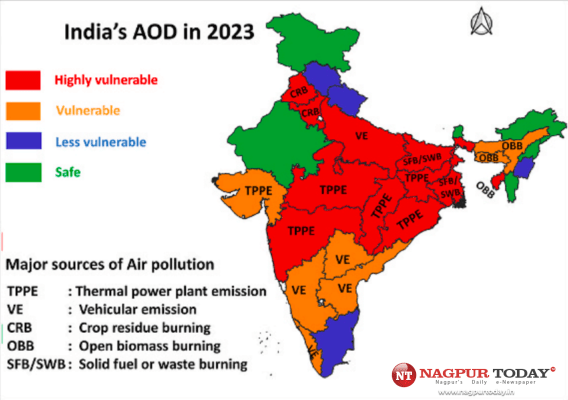Analysis finds state needs to turn down its thermal power plant capacity by 41% or 10 GW to move to safe aerosol pollution zone
Mumbai/Nagpur: The Newyear may not come bearing good news for Maharashtra state. In 2023, aerosol pollution in Maharashtra is anticipated to move from its current ‘vulnerable’ orange zone to the “highly vulnerable” red zone.
High aerosol amounts include particulate matter (PM2.5 and PM10) consisting of sea salt, dust, sulphate, black and organic carbon. If inhaled they can be harmful to people’s health. Aerosol optical depth (AOD) is the quantitative estimate of the aerosol present in the atmosphere and it can be used as a proxy measurement of PM2.5.
The present study – A deep insight into state-level aerosol pollution in India – by researchers Dr Abhijit Chatterjee, Associate Professor and his PhD scholar Monami Dutta from Bose Institute, Kolkata, provides a national scenario of aerosol pollution with the long-term (2005–2019) trend, source apportionment, and future scenario (2023) for various Indian states. It was published in the peer-reviewed journal Elsevier in August this year.
Maharashtra currently falls under the orange category which is a vulnerable zone with AOD between 0.4-0.5. However, rising aerosol pollution is expected to push the AOD higher than 0.5 to enter into the most vulnerable (red) zone.
The values of AOD range from 0 and 1. 0. While 0 indicates a crystal-clear sky with maximum visibility, a value of 1 indicates very hazy conditions (see box for colour codes). AOD values less than 0.3 fall under the green zone (safe), 0.3-0.4 is blue zone (less vulnerable), 0.4-0.5 is orange (vulnerable) while over 0.5 is the red zone (highly vulnerable).
“According to our study, air pollution in Maharashtra has mostly been influenced by coal based thermal power plants (TPP) in the past. Its capacity is increasing with the increase in demand for electricity. However, if the state continues to install the TPP capacity as observed in past it would enter into the most vulnerable zone (mean AOD of the state will be higher than 0.5) which could result in an increase in morbidity rate, decrease in life expectancy along with other health issues of the people of Maharashtra,” said DrAbhijit Chatterjee, Principal author of this study and Associate Professor of Environmental Sciences at Bose Institute, adding that Maharashtra can witness an AOD rise of about 7% between 2019-2023.
The study identified the main sources of aerosol pollution in Maharashtra to be thermal power plants, solid fuel burning and vehicular emissions. The sources were assessed through three phases – phase I being 2005 to 2009, phase II 2010 to 2014, and phase III 2015-2019.
The contribution of emissions from TPPs increased from 31% to 39% between phase I and phase III (2005 – 2019), mainly due to the increase in capacity and dependence on coal based power generation, the study said. Over the years the contribution of solid fuel burning to aerosol pollution has been declining from 24% to 18% while vehicular emissions have remained consistent throughout the three phases (14-15%).
Maharashtra needs to turn down its TPP capacity by 41% (10 GW) to move to the Blue Safe Zone, the study recommended. “Maharashtra is highly influenced by Coal based Thermal Power Plants (In phase 3 i.e. from the year 2015-2019, the TPP contribution to air pollution is around 39%. In order to control such threats, the State government should not only restrict further sanction of new TPPs but also should focus on reducing the current TPP capacity by at least 10 GW,” said Monami Dutta, first-author of the study and Senior Research Fellow, Bose Institute, Kolkata.
Explaining the science, Dutta explained that “Aerosol Optical Thickness is the degree to which aerosols attenuate the solar radiation” in the atmosphere. Small size particles (less than 10 micrometres) in the atmosphere alter how Infrared and Visible light is reflected, scattered, and absorbed. “AOD is measured on the basis of how much light is getting attenuated due to the presence of particulate matter. More particulates present, more light will be absorbed and hence more will be the AOD. It is measured with the help of remote sensing using satellites,” she said.
➢ Division of categories for AOD
Based on these percentiles, there are 4 different colour zones-
● Green (Safe Zone)- AOD value less than 0.3
● Blue (Less Vulnerable Zone)- AOD value between 0.3–0.4
● Orange (Vulnerable zone)- AOD value between 0.4–0.5
● Red (Highly Vulnerable zone)- AOD value greater than 0.5
In the paper, the threshold for aerosol pollution (AOD) vulnerability has been considered as a value of 0.4, and the states above this threshold are considered vulnerable.
(Source: A deep insight into state-level aerosol pollution in India: Long-term (2005–2019) characteristics, source apportionment, and future projection (2023), Atmospheric Environment, Vol 289, 119312, 2022)
















